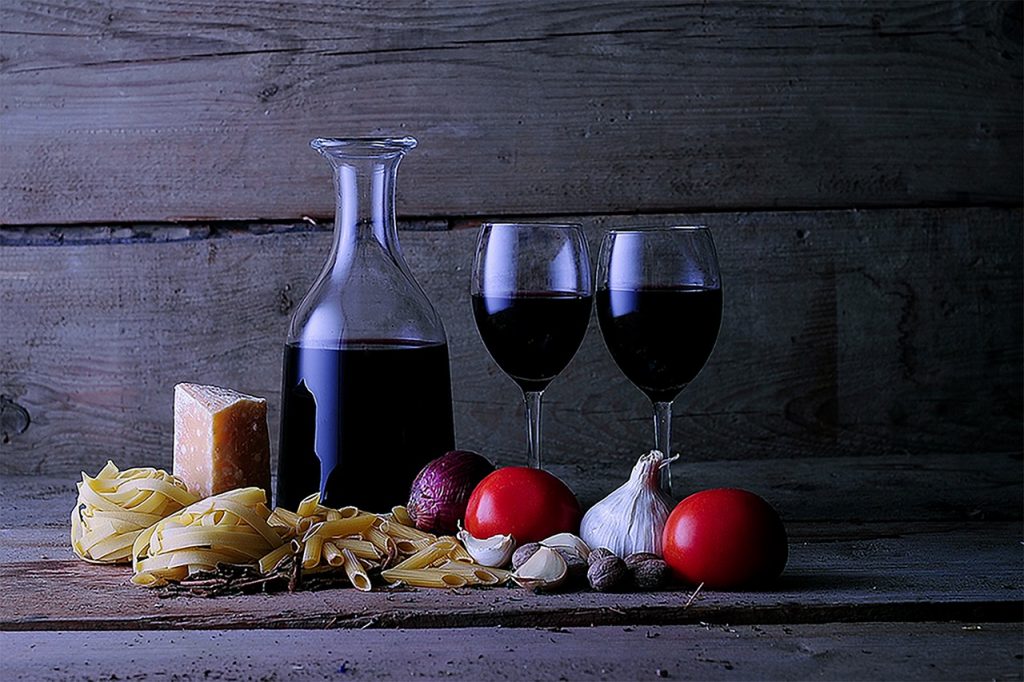White, Rosé, and Red wine: The Basics
Do you recognize that question? Don’t feel embarrassed; you are not the only one struggling with the decision of which wine to pair with the food you have planned for that dinner. There are no strict rules, but please allow us to give you some basic guidelines that will help you make a good choice.
White, Rosé, and Red wine: The Basics (Chapter 01)
We’d like to tell you a bit more about the different elements that generally build the taste of a wine and create your experience. There will be many more aspects than the elements we are naming here, but we don’t want to scare you away. This should be a pleasant experience, so for now, we’ll stick with the basics.
Before we start, remember it is your taste and your experience. No two people are alike, although twins come very close, so your taste is a very personal thing. Tasting wine involves your eyes, your nose, your mouth, and even your mind. There is no chocolate or leather in wine, but your mind translates your taste experience into something you remember. That also makes wine tasting complicated because you may smell or taste things you do not actually remember and do not recognize. If so, try to find a description of your smell or taste by things you do know. It is your experience, so there are no wrong answers, and during your adventure, you gradually learn to recognize and remember different smells and tastes.
Now, let’s start with the five basic wine traits:
- Body
- Sweetness
- Tannin
- Acidity
- Alcohol
Body means a way to categorize wine by intensity level from lightest to richest. It is the so-called mouthfeel of a wine. Compare it with the mouthfeel of milk, from skim to whole milk, as from light-bodied to full-bodied wine.
Sweetness in wine comes from residual sugar. Residual sugar is the unfermented grape sugars left over in the wine after completion of the fermentation. Sweetness levels of wine vary from dry (almost no residual sugar) to sweet (high percentage of residual sugar).
Tannin is found in grape skins and seeds, and also in oak barrels used to age wines. Tannins taste bitter, but well-balanced tannins give a wine a very specific character. Tannins are beneficial because they stabilize wine and buffer it against oxidation. In wine, tannins are quite subtle and feel like a drying sensation that makes your lips stick to your teeth. Tannins are basically present in all aged wines, but they are generally much more present in red wines as a result of the winemaking process.
Acidity is what gives wine its tart and sour taste; it makes your mouth water and tingle. Acidity is important in wine because it works as a natural preservative, preventing wine from going bad. Wines with higher acidity taste lighter-bodied and less sweet, generally described as bright or fresh. Wines with lower acidity taste fuller-bodied and sweeter.
Alcohol is the result of fermentation of grape sugars and has a profound effect on the taste and ageability of wine. In general, wines vary between 12% and 15% alcohol by volume. Alcohol can taste bitter, sweet, spicy, and oily all at once and can enhance similar tastes in wine considerably. Alcohol also influences human health and should be consumed with moderation. Never use alcohol if you have to participate in traffic and/or work with machines.
Due to the characteristics of the various grapes that are used in winemaking, a wine develops a specific taste sensation. In the next chapter, we come back in more detail on aromas and tasting notes, but based on the above-explained wine traits, we’d like to present you now with a few basic guidelines on which wine is best to pair with which dish.
Keep in mind that these are very general guidelines, because just like people, no two wines are the same unless the bottles originate from the same barrel and have been stored and aged under exactly the same conditions. Yes, we admit, wine is a complex product.
- Red with red, white with white: this means pair a red wine with red meat and pair a white wine with white fish. The tannin of an aged red wine complements the taste of red meats, where they would destroy the taste of fish. In return, the acidity of a fresh white wine complements the taste of fresh seafood, where the wine will not have sufficient body to pair with red meats.
- Acid likes acid and/or fat and/or salt. In short, a dry white pairs perfectly with acid, fat, or savory food, but also a young dry red that has not aged in oak barrels will fit in.
- Sweet likes sweet and/or spicy and/or salty. In short, a sweet white or red will pair well with sweet, spicy, or savory food. Sweet moderates the heat, and the wine should be sweeter than the dish.
- Tannin likes fat. In short, a wine that is rich in tannins pairs well with fatty dishes. That can be a full-bodied and aged red, but also a classic white that has aged in oak barrels. The dish asks for an aged wine that is rich.
- Alcohol likes fat. In short, a rich, full-bodied, high-alcohol wine pairs well with a rich, fatty dish.
- Rich likes rich, and small likes small. A full-bodied and aged wine will overpower a small dish, and a fresh, young wine will not be able to carry a rich dish.
Rosé is a wine that has a bit of both worlds, with wines that lean more towards the whites and pair with similar dishes, and with wines that lean more towards light to medium-bodied reds with balanced tannins. Rosé wines are often used as an appetizer, but a cool rosé wine is also a perfect companion for light snacks on a sunny terrace.
For the purpose of pairing wine, of all tastes found in food, you only need to think about the following six: Salt – Acid – Sweet – Bitter – Fat – Spicy. Narrow down your dominant food taste to the most prominent one of these tastes and pair your wine based on that taste, and you cannot go wrong!”

